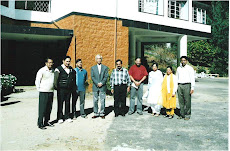By C. Radhakrishnan
As teachers we usually know what we think our students should get out of a class session, but how often do we know how close their understanding is to our expectations? Do we have to wait for a monthly test or term exam to find out? Similarly, do we need wait for the end of the year to determine students' reactions to our teaching?
The one-minute feedback may be used to perform either function: determining students' understanding of a particular class or getting a sense of how students would rate our teaching. The procedure is simple: give students the last few minutes of class to write the answer(s) to one or two specific questions you choose to ask them; collect the answers and synthesise them in any way you like; respond in some way during the following class period.
If you wish to focus on student understanding, your question may be general ("What was the most important point in the topic?") or rather specific ("Summarize two conflicting points of view about gender equality."). When I have tried this feedback tool, I have surprised to see that what I believed students had driven home as the vital topic was not what I had perceived to be the essential point. Students know you are paying attention to them and to their needs if you then begin the next class by clarifying where necessary. You can also give the students a certain choice in a particular topic by asking them what they would like to learn more about. If a consensus results and if you can work from it, you know you are addressing student interests. The one-minute feedback is a quick assessment tool that, with little time and little effort, can keep you in touch with your learners.
You can also use the one-minute feedback to get a sense of how students perceive your teaching. At any time during an academic term, ask your students to write in answer to specific questions. Depending on the class and your concerns, you might ask about organisation ("How well do the discussions integrate with the reading?"), style ("How comfortable do you feel asking questions?"), and clarity (“How clear was today’s teaching?”). Students will generally respond generously and positively to a request for information that will make a class/lesson better for them. If you summarize responses for them and convey your plans for desirable changes, students will tend to find you a responsive teacher.
However if you want a complete analysis of your teaching process it’s always better to go for a detailed feedback questionnaire covering every aspect of teaching-learning process, followed by a SWOT analysis. Here again sharing response data with students and opting for desirable changes based on the feedback are key in establishing excellent rapport with the learners.
The few minutes of class time the one-minute feedback may actually take is worthwhile because the feedback you receive is invaluable. If you have any other types of feedback or quick assessment tools, please let us know.
As teachers we usually know what we think our students should get out of a class session, but how often do we know how close their understanding is to our expectations? Do we have to wait for a monthly test or term exam to find out? Similarly, do we need wait for the end of the year to determine students' reactions to our teaching?
The one-minute feedback may be used to perform either function: determining students' understanding of a particular class or getting a sense of how students would rate our teaching. The procedure is simple: give students the last few minutes of class to write the answer(s) to one or two specific questions you choose to ask them; collect the answers and synthesise them in any way you like; respond in some way during the following class period.
If you wish to focus on student understanding, your question may be general ("What was the most important point in the topic?") or rather specific ("Summarize two conflicting points of view about gender equality."). When I have tried this feedback tool, I have surprised to see that what I believed students had driven home as the vital topic was not what I had perceived to be the essential point. Students know you are paying attention to them and to their needs if you then begin the next class by clarifying where necessary. You can also give the students a certain choice in a particular topic by asking them what they would like to learn more about. If a consensus results and if you can work from it, you know you are addressing student interests. The one-minute feedback is a quick assessment tool that, with little time and little effort, can keep you in touch with your learners.
You can also use the one-minute feedback to get a sense of how students perceive your teaching. At any time during an academic term, ask your students to write in answer to specific questions. Depending on the class and your concerns, you might ask about organisation ("How well do the discussions integrate with the reading?"), style ("How comfortable do you feel asking questions?"), and clarity (“How clear was today’s teaching?”). Students will generally respond generously and positively to a request for information that will make a class/lesson better for them. If you summarize responses for them and convey your plans for desirable changes, students will tend to find you a responsive teacher.
However if you want a complete analysis of your teaching process it’s always better to go for a detailed feedback questionnaire covering every aspect of teaching-learning process, followed by a SWOT analysis. Here again sharing response data with students and opting for desirable changes based on the feedback are key in establishing excellent rapport with the learners.
The few minutes of class time the one-minute feedback may actually take is worthwhile because the feedback you receive is invaluable. If you have any other types of feedback or quick assessment tools, please let us know.




